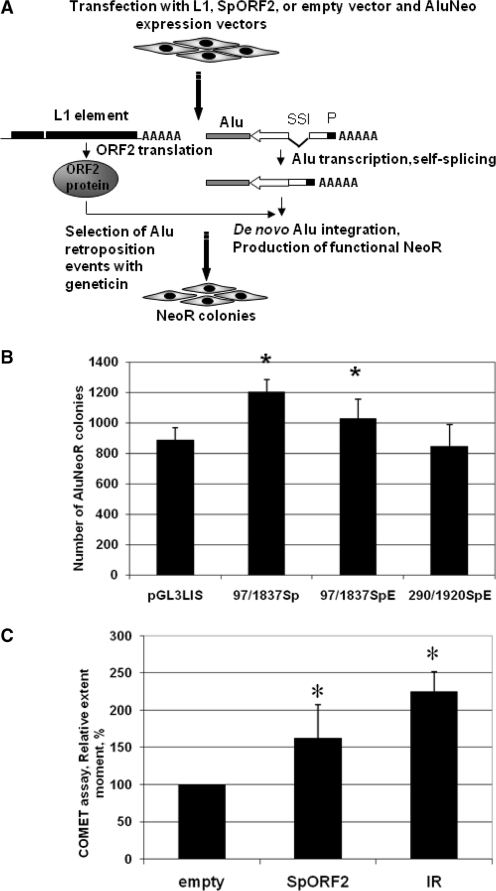Figure 4.
SpORF2 splice product can produce functional L1 ORF2 protein. (A) Experimental approach for L1 ORF2-dependent Alu retroposition. An Alu element (gray box) tagged with a backwards neomycin resistance (NeoR) gene (22) (white arrow indicating the orientation of NeoR transcription) expression of which is driven by a promoter (black box marked with P) in the orientation opposite of the Alu transcription. NeoR gene ORF is interrupted by a self-splicing intron that is removed upon Alu transcription and a functional NeoR gene can be expressed upon tagged Alu retroposition. The tagged Alu expression cassette is transfected into HeLa cells with the wt L1, SpORF2 expression vectors or tagged Alu vector alone, which detects ‘background activity’ generated by the endogenously expressed L1 ORF2. (B) SpORF2 L1 RNA products can produce functional ORF2 protein to drive Alu retroposition in tissue culture. A mean± SD of NeoR colonies for each construct is shown (see Supplementary Figure S3A for construct design and Supplemenatry Figure S3B for additional controls). (C) Transient expression of SpORF2 splice product in HeLa cells leads to DNA damage. HeLa cells were transiently transfected with the empty or SpORF2 expression vector, or subjected to 5 Gy of IR. Neutral COMET assay was performed and a mean± SD of the tail extent moment from three independent experiments is shown. Asterisks indicate statistically significant difference between the treatments and the control empty vector (t-test, P < 0.05).

